Major error eye candy #14: Three ways to break a coin
Split planchets are a known type of error, where the obverse separates fully from the reverse. They can be viewed as the ultimate lamination if you like. A partial split is called a 'clamshell'. Fully split planchets are more common on nickels than cents, possibly because of the added thickness of the nickels.
This example is a little unusual in that the two haves are still hanging together by a thread somewhere in the middle, and I can't separate them to show you the insides even though the split continues around the full circumference of the coin.
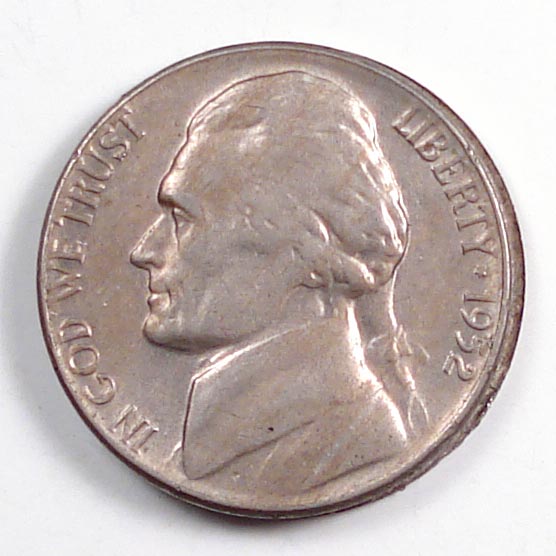


Where the "horizontal" fracture of a split planchet produces obverse and reverse halves, the "vertical" fracture of a broken planchet breaks a coin into left and right halves. One of the most famous examples is the Broken CC Morgan Dollar. This example on a nickel shows the expectedly rough and porous inner edge.
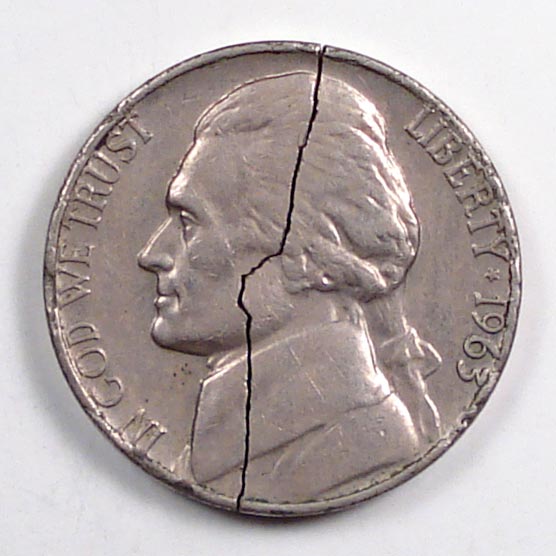
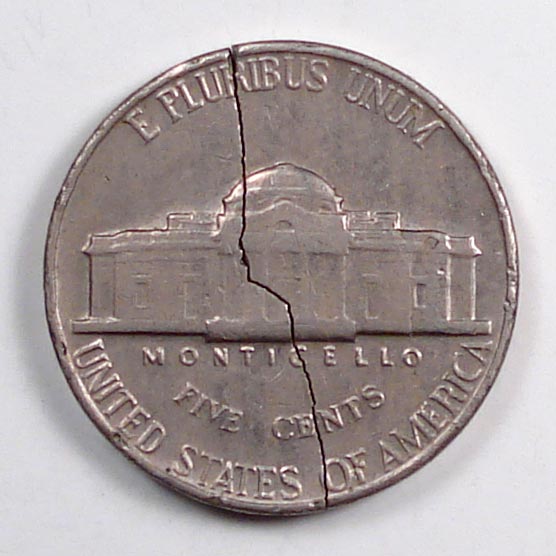
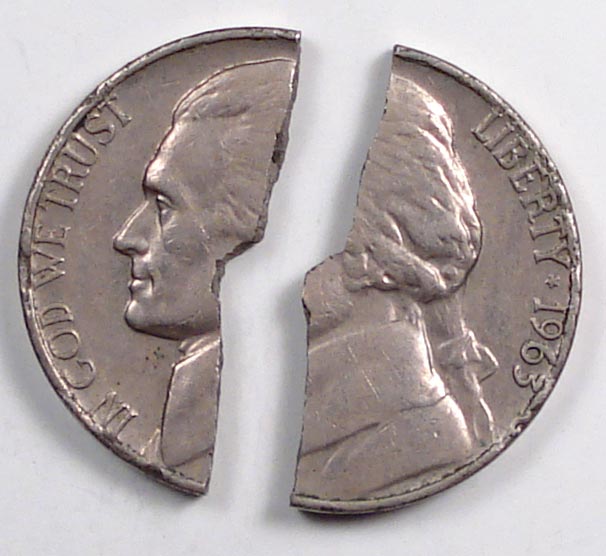
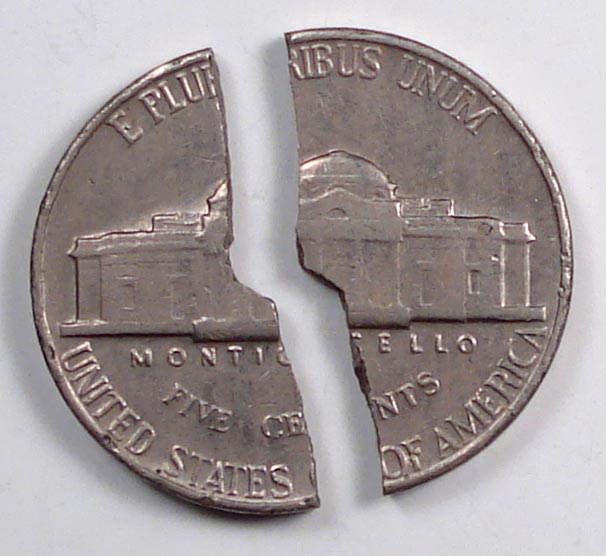

What possibility is there besides horizontal and vertical? Why, diagonal of course! I've never seen another example, but this Lincoln cent clearly has a full split that is midway between the first two types.
FWIW, the green is not PVC. It doesn't come off with acetone, and it doesn't look particularly rough either. I wonder if it represents impurities that were present in the original copper strip and contributed to the split in the first place.




Earlier:
Major error eye candy #1: Edge strike, double struck
Major error eye candy #2: 125% struck through cloth
Major error eye candy #3: Struck through feeder finger
Major error eye candy #4: 1955 Double Date Lincoln Cent
Major error eye candy #5: Nonface strikes
Major error eye candy #6: Reeding struck through coin
Major error eye candy #7: Broadstrike with partial counterbrockage
Major error eye candy #8: Incomplete clip mystery dime?
Major error eye candy #9: Clad layer split before strike
Major error eye candy #11: Lincoln 1c indent by 10c
Major error eye candy #12: Struck on scrap with odd edge marks
Major error eye candy #13: John Wilkes Booth, that's who
This example is a little unusual in that the two haves are still hanging together by a thread somewhere in the middle, and I can't separate them to show you the insides even though the split continues around the full circumference of the coin.



Where the "horizontal" fracture of a split planchet produces obverse and reverse halves, the "vertical" fracture of a broken planchet breaks a coin into left and right halves. One of the most famous examples is the Broken CC Morgan Dollar. This example on a nickel shows the expectedly rough and porous inner edge.





What possibility is there besides horizontal and vertical? Why, diagonal of course! I've never seen another example, but this Lincoln cent clearly has a full split that is midway between the first two types.
FWIW, the green is not PVC. It doesn't come off with acetone, and it doesn't look particularly rough either. I wonder if it represents impurities that were present in the original copper strip and contributed to the split in the first place.




Earlier:
Major error eye candy #1: Edge strike, double struck
Major error eye candy #2: 125% struck through cloth
Major error eye candy #3: Struck through feeder finger
Major error eye candy #4: 1955 Double Date Lincoln Cent
Major error eye candy #5: Nonface strikes
Major error eye candy #6: Reeding struck through coin
Major error eye candy #7: Broadstrike with partial counterbrockage
Major error eye candy #8: Incomplete clip mystery dime?
Major error eye candy #9: Clad layer split before strike
Major error eye candy #11: Lincoln 1c indent by 10c
Major error eye candy #12: Struck on scrap with odd edge marks
Major error eye candy #13: John Wilkes Booth, that's who
0
Comments
i
.
Hoard the keys.
Bob
for these particular three, having both halves is crucial. what a great assemblage of errors
Liberty: Parent of Science & Industry